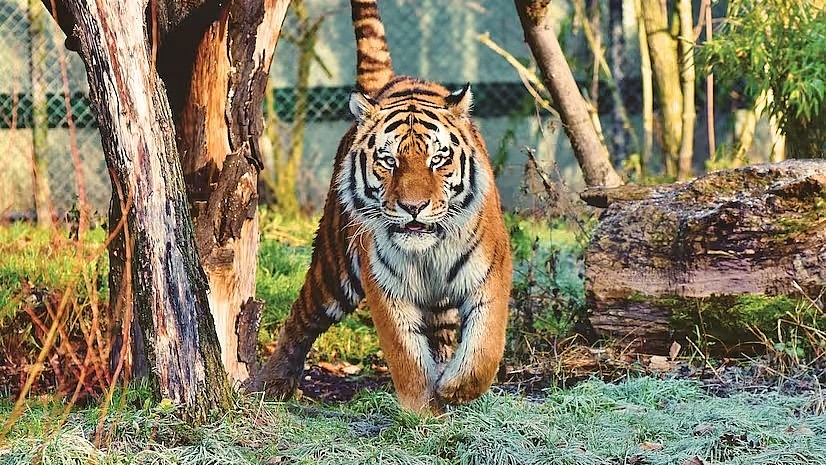 |
| Photo: Pexels |
Prime Minister Narendra Modi on Sunday declared that India does not accept the notion that ecology and economy are mutually exclusive; instead, our nation emphasizes the need for both to co-exist in harmony.
The protection of wildlife is a universal concern, Prime Minister Narendra Modi underscored as he launched the International Big Cat Alliance (IBCA) on July 2019. The IBCA was born out of a message that he had issued earlier that month, calling on global leaders to join forces to eradicate demand and strictly eradicate poaching and illegal wildlife trade in Asia.
The International Big Cat Association (IBCA) will focus on the protection and conservation of seven major species of big cats around the world: tigers, lions, leopards, snow leopards, pumas, jaguars, and cheetahs, in the countries in which they reside. By providing educational resources and advocating for the well-being of these majestic animals, the IBCA hopes to ensure that they remain a part of our planet’s biosphere for generations to come.
Presenting the vision for tiger conservation over the next 25 years, he released a booklet titled Amrit Kaal Ka Tiger Vision that outlined his ambitious plan. The booklet contains a comprehensive approach to tiger conservation that seeks to protect and strengthen the future of these majestic animals. It outlines strategies for habitat protection, sustainable tourism, anti-poaching activities, and wildlife corridor development that could lead to a future where tigers are safe and thrive. Additionally, the booklet highlights the need for public awareness and education campaigns to ensure the successful implementation of the conservation initiatives. With the help of this plan, it is hoped that tigers will be able to live out their full potential in the wild for generations to come.
He was delivering a keynote address during the inaugural session of the commemoration of 50 years of Project Tiger at the Karnataka State Open University in Mysuru. The event marked half a century of conservation efforts towards protecting India’s iconic Bengal Tiger. His speech highlighted the importance of preserving the species and the immense progress made over the past five decades. He emphasized the need to continue the good work and build upon the achievements of Project Tiger to ensure a safe future for the majestic animal.
Citing census data that indicated the tiger population in India had increased from 2,967 in 2018 to a total of 3,167 in 2022, he declared, “The impressive numbers we have achieved demonstrate that our family is growing. This is a moment of honor, not just for India, but also for the entire world.”
Pointing out that cheetahs had become extinct in India decades ago, he referred to the recent initiative where big cats were brought to the country from Namibia and South Africa, and said it was the first successful transcontinental translocation of the big cat. This remarkable accomplishment has been celebrated by conservationists and animal welfare activists across the globe, as it marks a crucial step towards the conservation of this majestic species.
He emphasized that four cubs had been born from these cheetahs at Kuno National Park in Madhya Pradesh.
It is encouraging that, as we celebrate 75 years of India’s independence, 75% of the world’s tiger population is in India. Furthermore, it is a remarkable coincidence that the tiger reserve in India covers an area of 75,000 sq. km. In addition, the tiger population has grown by 75% in the last 10-12 years.
provides a platform for a complex process which involves the exchange of data and information between multiple participants.
The Project offers a sophisticated platform to facilitate the exchange of data and information between multiple parties. It simplifies the complex process, helping participants to coordinate and collaborate more efficiently.
On April 1, 1973, the Indira Gandhi government declared the Bengal Tiger the national animal of India and launched a centrally sponsored scheme, known as Project Tiger, to ensure the survival and maintenance of the tiger population in specially designated tiger reserves across India. Aimed at preserving and protecting the endangered species, Project Tiger was the first wildlife conservation project of its kind in the world and has been largely successful in increasing the population of the majestic animal.
The ambitious initiative launched in the 1970s was designed to increase the tiger population, which was on the brink of extinction. In 1972, there were only a dismal 1,411 tigers left in India.
According to estimates, India boasted a whopping 40,000 tigers in the wild by the end of the 19th century. However, their numbers drastically plummeted during the 20th century due to rampant trophy hunting and habitat destruction. In response, the Indian government banned tiger hunting in 1968 in an effort to save the species.
To protect wild animals, birds, and plants and to address issues related to ecological and environmental security, the government enacted the Wildlife (Protection) Act, 1972. This act safeguards the natural habitats of wildlife and provides for the protection of endangered species. It also seeks to regulate hunting and the trade of wild animals and plants. Furthermore, the act ensures that the wildlife of India is conserved for future generations.
When it was first launched in 1973, Project Tiger covered nine reserves across 18,278 square kilometers. Now, there are 53 tiger reserves spanning 75,000 square kilometers, and they are home to 3,167 tigers, which makes up for 75 percent of the global wild tiger population. India is undoubtedly a leader when it comes to tiger conservation.
In the last four years (until 2022), Rs 1,047 crore has been allocated under the project, with 97% of the allocated budget released by the Centre. This substantial injection of funds has enabled an unprecedented level of progress to be made in the implementation of the project.
 |
| Prime Minister Narendra Modi at Bandipur Tiger Reserve on Sunday. Photo: PTI |
The Conflict is an age-old problem that has plagued mankind since the dawn of time. From wars to disagreements between individuals, conflicts are unavoidable in life. However, understanding the underlying causes of conflicts can help us to better manage them. Conflicts can arise due to a variety of factors, including power imbalances, differences in values, culture, beliefs, and misunderstandings. In order to resolve conflicts, it is important to gain an understanding of the other person’s perspective and to work together to find a mutually beneficial solution.
Five decades after the implementation of Project Tiger, poaching remains the most significant threat to big cats in India. While the program has had some success in preserving the population of tigers, illegal hunting continues to be a major concern. In addition to poaching, the destruction of habitats, climate change, and human-wildlife conflict are all contributing to the decline of big cats in India. Conservation efforts must be increased in order to protect these majestic creatures and ensure their survival for future generations.
The National Tiger Conservation Authority’s (NTCA’s) mortality data from 2012 to 2022 reveals that out of the 762 tiger deaths investigated during this period, approximately 55% were attributed to natural causes, with poaching coming in second at 25%. Seizure was the third highest cause of death, accounting for 14% of the total deaths. The remaining deaths were categorized as unnatural non-poaching deaths.
The Additional Director General of Forests and Member Secretary of NTCA, S P Yadav, highlighted that despite the significant decrease in tiger poaching that has been achieved through the use of advanced technology and improved protection measures, poaching still remains a grave threat along with habitat fragmentation and degradation.
Tigers can perish due to the consumption of urea as well, according to Yadav, who spoke to Business Standard. All tiger deaths are considered an incident of ‘poaching’ unless proved otherwise.
In the first three months of 2021, the number of tiger deaths is at a three-year high. According to data from the National Tiger Conservation Authority (NTCA), a total of 52 tigers had died as of April 3rd. This marks an alarming increase in the number of deaths from the same period over the past three years. It is essential that urgent action is taken to protect these majestic animals from further peril.
This year, the average monthly mortality rate has risen significantly to 17, a dramatic increase from the previous decade’s average of 10. Tragically, 1,157 tigers have died since 2012, reaffirming the need for more aggressive conservation efforts.
When asked about the objectives of Project Tiger for the next 50 years, Yadav said, “The aim is to have a viable and sustainable population of tigers in their habitats, based on a scientifically calculated carrying capacity. I am not assigning a numerical goal to this, as we cannot increase the number of tigers in the country at the same rate as this would cause increased conflict with humans.”
A total of 169 human fatalities due to tiger attacks were recorded between the period of January 2018 and June 2021, according to data from the Ministry of Environment.








